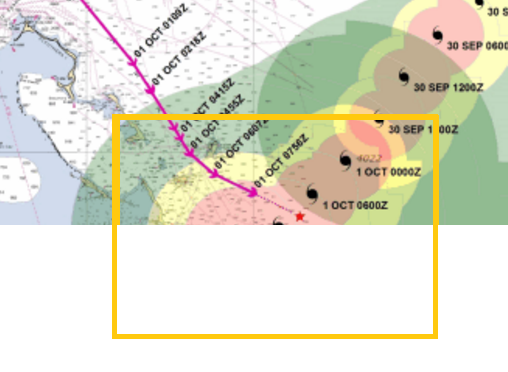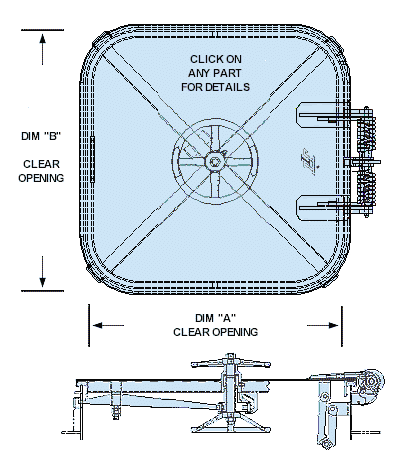[QUOTE=c.captain;180072]the way I understand it is on a previous voyage, permission was requested and received to shut down a boiler enroute to conduct inspections but no such action was planned for the fatal voyage HOWEVER, we can assume that the plant was not 100% by any means, One boiler was flagged to receive repairs in November and by inference, we can gather that there would be other pending work to be done with the plant.
THROUGHOUT THIS ENTIRE TERRIBLE TRAGEDY, THERE SEEMS TO BE A WALL OF SILENCE CONCERNING THE ACTUAL CONDITION OF THE PLANT NOR WHAT HAPPENED TO CAUSE THE SHIP TO GO DIW WHEN IT DID, YET THE FACT REMAINS THAT DAVIDSON STILL TOOK THE EL FARO INTO PERIL WHETHER THE PLANT WAS FULLY FUNCTIONAL OR IF IT HAD DEFICIENCIES! Maybe there is a slightly lesser reason to condemn him if the plant was good in all respects than if he challenged a strong hurricane with a weak leg but he can NEVER be excused. [COLOR=“#00FF00”]Any master MUST always know the condition of every system in his ship because without that knowledge, the basis for making critical decisions can never be considered as sound.[/COLOR][/QUOTE]
Reading this part of the hearing on the boilers one would say that your statement in red is rather spot on.
The board asked Mr. Laasko about the condition of both her boilers, and whether the maintenance scheduled for them was sufficient in its scope and timeliness.
Mr. Laasko told the board that he holds no certifications, but has 22 years of experience in the field. Walashek Industrial, his employer, is the “largest provider of services to marine propulsion boilers in the United States,” with service facilities in Seattle, Portland, Norfolk, Mobile, San Diego and Charleston.
He was asked to read selections of his El Faro survey report into the record, reproduced from his testimony below.
The forward and rear firestops are starting to fall apart, toward the top of each stop, and holes are starting to show. The left stop, when facing the screen tubes, has pushed the first screen tube away from the wall, so that it touches the next screen tube.
The front wall on starboard boiler is in very bad shape. The brick wall in spots has pushed itself against the tubes and in turn pushes the tubes out causing them to bow in towards the firebox. Other parts of the wall have begun to deteriorate and there is now a three to four inch gap between the wall and the tubes. As the tubes are pushed out, tubes around the burner throats have begun to show signs of flame impediment.
After discussions with the chief, first assistant, and second assistant, it can be assumed that the port boiler firebox is in the same if not worse condition than the starboard boiler. All three have said that the front wall brick and tubes are in very bad shape.
It is highly recommended that the front wall tubes as well as brickwork, including burner throats, be renewed on both boilers. The brick is moving due to soot buildup behind them and as a result can cause casing fires as well as damage to tubes to the point of failure. The deterioration of the brick can also cause inner casings to fail from lack of heat resistant brick and insulation in front of it.
In follow-up questioning, TOTE’s representative at the hearing asked Laasko, "the negative things that were cited by the Coast Guard . . . those are efficiency items, aren’t they?
Laasko responded affirmatively, that these were efficiency items, not safety items. Separately he noted that while there was "definitely some work that needed to be done,” he “didn’t feel unsafe around those boilers,” and if there had been a safety concern he would have notified the vessel’s engineers.
The survey was completed as part of a pre-shipyard assessment for a yard period coming up in November. Walashek Industrial’s repair estimate, prepared for TOTE after the survey, included only “burner throats on both boilers, remove slag from firebox decks, clear gas passes,” leaving out parts of the recommended firebox work from Laasko’s survey, plus his additional recommendation for retubing on the starboard economizer.
The board produced an email between chief engineer James Robinson and TOTE executive Tim Neeson from July 2015 regarding the deteriorating condition of her boilers, and asked Laasko whether he thought it prudent to leave the maintenance unaddressed between July and November (or longer, if the full extent of work was not scheduled for November’s shipyard). He told the board that this was not his call, and that he “would recommend that it be fixed right away . . . but it’s really up to the ship’s owner at that point.”
“It could lapse a couple of months, it wouldn’t be a big deal,” he added.
He was not involved in any discussions with shoreside TOTE officials, and allowed that another firm besides Walashek Industrial could have been chosen to quote the remaining parts of his recommended scope of work. The repairs were to be done in Portland or Seattle, and Walashek has competitors in both markets.
Referring to the green text it was said that Davidson was hands off. If this is true it could mean that he was not well informed of the propulsion’s condition and was not hampered by that in his decision to push on.


